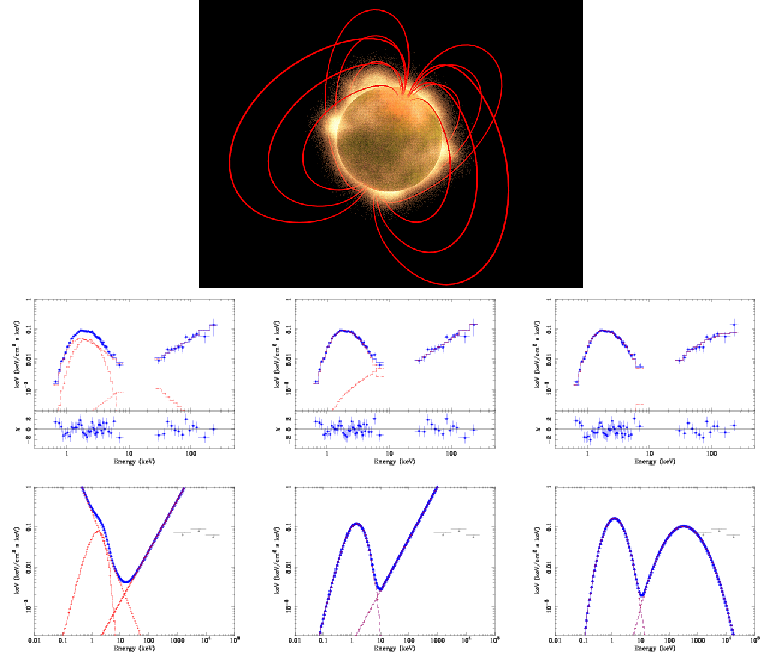Daily Image
15-03-2007High energy emission from magnetars
| Submitter: | Hayley Bignall |
| Description: | At a recent colloquium in Dwingeloo, astronomer Nanda Rea (SRON, Utrecht) presented some of the latest research on neutron stars. Magnetars are isolated neutron stars with magnetic fields as high as 10 to the power 15 Gauss. Their high energy emission is believed to be powered by the decay of their very high magnetic fields, however many open issues are still to be understood for a complete picture of the physics involved in the persistent and bursting emission of these puzzling neutron stars. The plots shown here are from empirical spectral modelling of the high energy emission of the magnetar 4U 0142+614, based on two simultaneous Swift and INTEGRAL observations (see Rea et al. 2007, ApJ Letters, in press, http://arxiv.org/abs/astro-ph/0703128/astro-ph/0703128 ). It was found that only three models fit satisfactorily the 0.5-250 keV spectrum of this magnetar: 1) a 0.4 keV blackbody and two power-laws (first column), 2) a resonant cyclotron scattering model plus a power-law (second column) and 3) two log-parabolic functions (third column). The upper row shows the unfolded spectrum and the residuals of the fits: in blue the data, the residuals and the overall model and in red the single components. The lower row presents the relative unabsorbed fitted models: in red the single components, in blue the overall model and the grey arrows report the COMPTEL upper limits (from Kuiper et al. 2006). Furthermore, it was found that only the log-parabolic functions (model 3) can naturally account for the upper limits set by COMPTEL in the gamma-ray range, and do not over-predict the infrared/optical emission of this source. These two log-parabolae are interpreted in terms of inverse Compton scattering of soft X-ray photons by very energetic particles on the magnetar magnetosphere. For further information contact N.Rea at sron.nl |
| Copyright: | Nanda Rea, illustration by Robert S. Mallozzi |
| Tweet |  |
